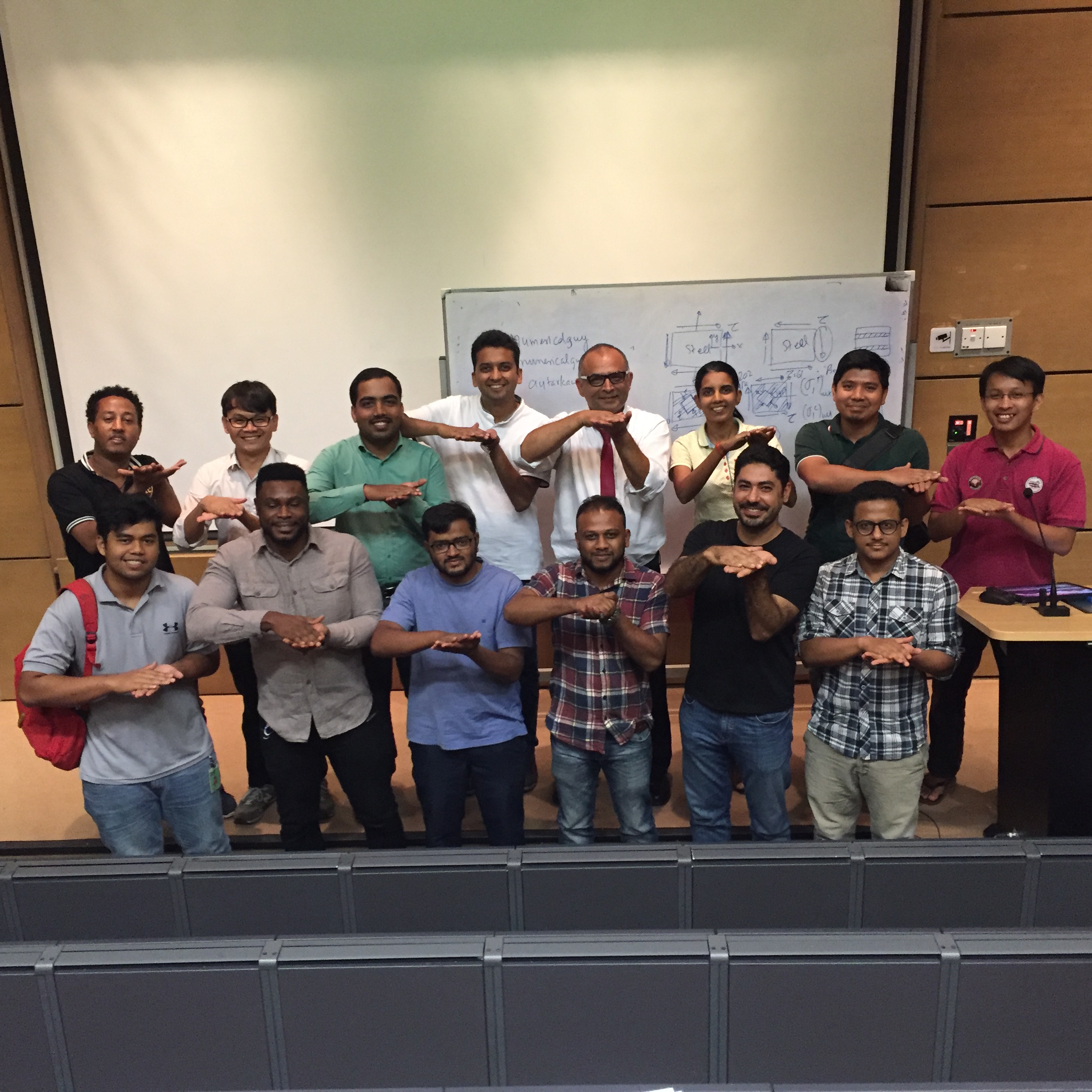I am writing this blog for each day of a Fulbright Specialist program I participated in to visit my host institution of UTP Malaysia. The trip lasted 18 days (July 8-July 25) and that included travel time.
“The Fulbright Specialist Program is a unique opportunity for U.S. academics and established professionals to engage in two- to six-week, project-based exchanges at host institutions across the globe.” Read more about the program.

Photo: The Chancellor’s building at UTP, Malaysia.
The opportunity arose when a professor of mechanical engineering, Dr. Srinavasa Rao of UTP Malaysia was visiting Tampa in 2017 for the annual international conference of the American Society of Mechanical Engineers. I told him about the program when he mentioned his institution’s high interest in engineering education. Eight months later, after he had made an application to the program at the Malaysian embassy as a host institution and had arranged university funds for host-institution responsibility (boarding, lodging, and local transportation), I was ready for this endeavor.
My task was to facilitate four workshops on engineering education, give guest lectures and conduct tutorials in my favorite course of Numerical Methods, teach a short course on Mechanics of Composite Materials, meet with individual faculty and administration, and create a plan for the future exchange of students and faculty between UTP and USF.
Day 1 – Sunday, July 8, 2018
Getting up at 3AM to go on a flight time of 27 hours and a travel time of 36 hours is not very many people look forward to, but they sure look forward to what they will do at the destination. The flight took me from my home city of Tampa, FL to Dallas, TX to Hong Kong City and finally to Kuala Lumpur, Malaysia. After a 2-hour flight delay in the last leg of the flight, I reached Kuala Lumpur next day at midnight.

Photo: Flight Path from Tampa to Kuala Lumpur (Courtesy: Great Circle Mapper )
Day 2 – Monday, July 9, 2018
It is late in the night of July 9 and I am here at the Kuala Lumpur airport going through immigration, customs, and baggage claim. My host, Professor Rao has traveled all the way from Seri Iskandar, Perak to take me back to UTP. However, since it was late, we spent the night in Kuala Lumpur. It was later than 2:30am that we reached the hotel. The hotel was right across the Twin Towers of Petronas and I had a partial view of it from my hotel window.
I could not sleep as I either had jet lag or had my share of the Z’s on the plane rides. A 12-hour time difference and jet lag work well if one wants to talk to their loved ones back in the USA.
Day 3, Tuesday, July 10, 2018
The previous day entry of this blog was that of the wee morning hours of July 10 but who is counting with the jet lag and the time difference of exactly 12 hours. Before leaving for Seri Iskandar, my host and I walked across the street for a morning walk to see the Twin Towers. With a few pictures and some selfies, it was nice to see this engineering marvel of the tallest twin towers in the world. The towers looked exquisite and the architectural design, at least to me, was very pleasing to the eye.

Photo: The Twin Towers of Petronas (Courtesy: Dr. Srinavasa Rao)
The ride to Seri Iskandar, the hometown of UTP, was little in getting out of the traffic jams of Kuala Lumpur but mostly on a well-built highway E1 that runs north-south between the border with Singapore on the south and Thailand on the north. The highway is a pleasure to drive with greenery and hills all around you. The highway is full of palm trees – no wonder they produce so much palm oil. Yes, they do drive on the left and it does take a little to get used to it. We stopped at a traveler’s stop close to Tapah and guess what two fast food places are there – KFC and Dunkin Donuts. There were a few other choices but to avoid any sudden food changes, my host recommends KFC. It was a good choice – they serve the chicken with rice and coleslaw.

Photo: The familiar KFC and Dunkin’ Donuts at a traveler’s stop in Tapah, Malaysia
We reached the hotel at about 4PM. The receptionist gave me coupons for breakfast and a print out of how to access the internet. You get 500MB of data on two devices for each day and you have to get new usernames and passwords at the front desk every day. The network speeds are meager – two Mb/s for upload and download but they are sufficient for my work – there is no need to be watching Netflix or YouTube even during personal time.
I checked into the room. It is spacious, the bed is comfortable and there is a rain shower in the bathroom. There are no closets in the room but there is enough cubbyhole space to put your clothes and belongings for an extended stay. A working desk with chair is also available, and the room has a refrigerator and a safe. There are a generous number of outlets throughout the room.
It is time to call my mom in India first and later my spouse. I love them both and the reason I called my Mom first was that the time difference was more favorable!
___________________________________________________
This material is based upon work supported by the Fulbright Specialist Grant and the products of the National Science Foundation Grants# 0126793, 0341468, 0717624, 0836981, 0836916, 0836805, 1322586, #1609637. Any opinions, findings, and conclusions or recommendations expressed in this material are those of the author(s) and do not necessarily reflect the views of the National Science Foundation or the Fulbright Program.








